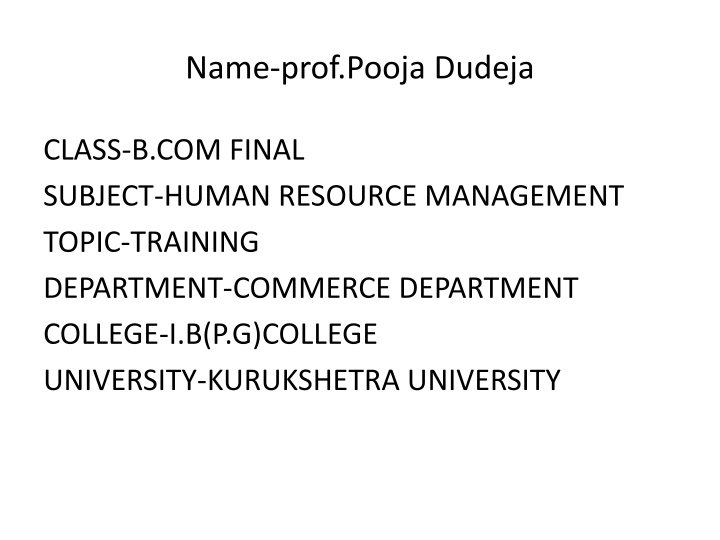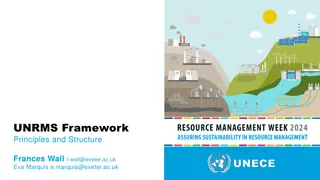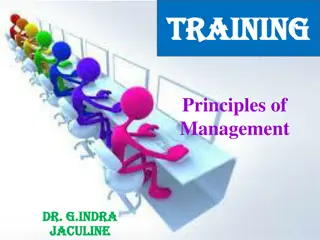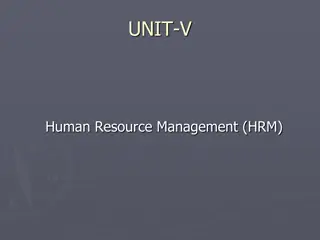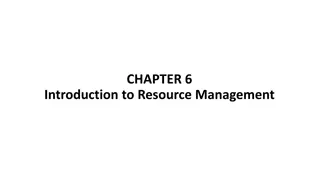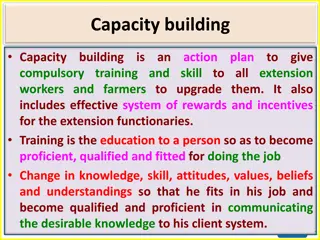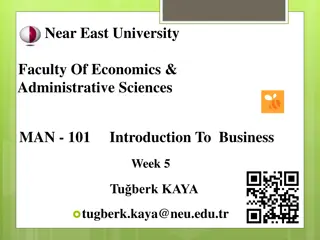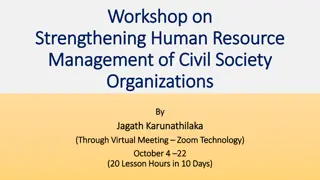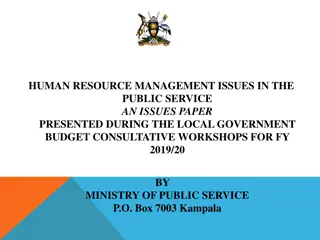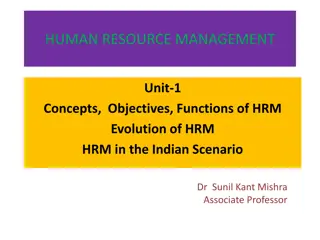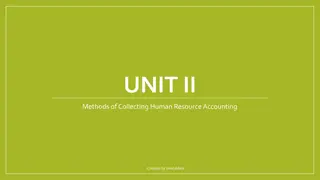Importance and Methods of Training in Human Resource Management
Training in human resource management plays a crucial role in enhancing employee skills, controlling attrition rates, and increasing job knowledge. This article discusses the importance of training, methods like on-the-job and off-the-job training, and specific techniques such as coaching, understudy, job rotation, and apprenticeship.
Download Presentation

Please find below an Image/Link to download the presentation.
The content on the website is provided AS IS for your information and personal use only. It may not be sold, licensed, or shared on other websites without obtaining consent from the author.If you encounter any issues during the download, it is possible that the publisher has removed the file from their server.
You are allowed to download the files provided on this website for personal or commercial use, subject to the condition that they are used lawfully. All files are the property of their respective owners.
The content on the website is provided AS IS for your information and personal use only. It may not be sold, licensed, or shared on other websites without obtaining consent from the author.
E N D
Presentation Transcript
Name-prof.Pooja Dudeja CLASS-B.COM FINAL SUBJECT-HUMAN RESOURCE MANAGEMENT TOPIC-TRAINING DEPARTMENT-COMMERCE DEPARTMENT COLLEGE-I.B(P.G)COLLEGE UNIVERSITY-KURUKSHETRA UNIVERSITY
TRAINING A process whereby people aquire capabilities to aid in the achievement of organizational goals. Trainig tries to improve a specific skill related to the job.
IMPORTANCE OF TRAINING It helps to control the attrition rate. It helps in motivating people to stay on,acquire new skill and remain continually useful to the organisation. It helps in increasing the job knowledge and skills of employee at each level.
TRAINING METHOD 1) ON THE JOB TRAINING 2) OFF THE JOB TRAINING
ON THE JOB TRAINING On the job training focuses on learning while an individual is actually engaged in work. 1. Coaching 2.Under study 3.Job rotation 4.Apprenticeship 5.Vestibule
COACHING It is one to one interaction Considered as corrective measure performance.It Helps in identifying weaknesses and focuses on areas improvement. It also offers the benefit of transferring theory learning to practice. for inadequate which needs
UNDERSTUDY Understudy training is the process in which superior instructs the staff by considering them as an understudy.The staff then learns from the senior by observing and experiencing to handle day to day tasks.
JOB ROTATION The trainee is systematically transferred to various jobs so that he can gain the experience on each of them .Rotation not only makes a person well acquainted with different jobs,but it also alleviates boredom and allows to develop rapport with a number of people.
APPRENTICESHIP In this method theoretical instruction and practical learning are provided to trainees in training institutes .The object of such training is to make the trainees all round craftsmen.It is an expensive method of training.
VESTIBULE In this method a training centre called vestibule is set up and actual job conditions are duplicated and simulated in it .under this training,the emphasis is on learning rather than production.It is costly and time consuming.
OFF THE JOB TRAINING Concerned with imparting training to employees outside the actual work place. 1. DISCUSSION METHOD 2. FIELD TRIP 3. LECTURE METHOD 4. E-LEARNING
DISCUSSION METHOD Discussion is defined as group work using different instructional techniques to attain predetermined objectives .Discussion method are effective in getting the trainees to think constructively .It emphasis on learning instead of teaching but it is not appropriate for all the topics.
FIELD TRIP A field trip or training in the field is a journey by a group of people to a place away from their normal environment The purpose of the trip is usually observation for experimental research or to provide students with experiences outside activities . education , non their everyday
LECTURE METHOD Lectures instruction.It is a verbal presentation for a large audience.The speaker must have considerable depth in the subject.In the colleges and universities,lectures are the most common methods used for training. are the traditional method of
E- LEARNING E-Learning is the use of technological processes to access learning material outside of a traditional classroom or office.Allows trainees to improve their skill and knowledge at their own comfortable pace and convenient time.
